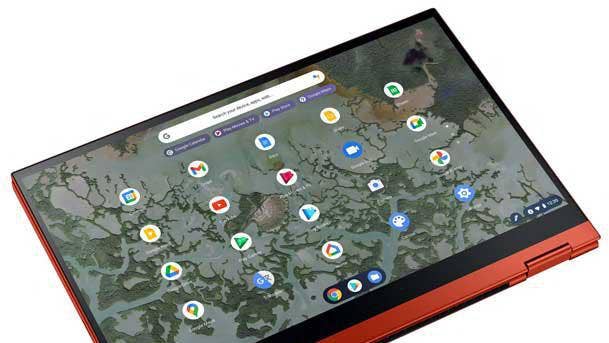Chromebook Shipments Plunge As Students Return To Class: IDC
While not unexpected, the Chromebook’s sharp downturn has channel partners looking at ways to adjust strategies. ‘Manufacturers dealing with supply chain issues would much rather use their rationed components to build a $1,000-plus laptop rather than a $300 Chromebook,’ one partner says.

Coveted for affordability and ease of deployment during the initial lockdown stages of the COVID-19 pandemic, Chromebooks have taken a huge hit in the second quarter — with shipments down 51.4 percent year-over-year — as schools return to in-person learning, according to research firm IDC.
While it’s a steep drop, the decline wasn’t unexpected as the pandemic pushed demand well beyond normal limits and gave channel partners huge opportunities to outfit schools with financial backing from the U.S. government. And IDC says Chromebook use will continue to stay strong despite falling from historic highs and without a flood of emergency public funding.
Dell held the top Chromebook position with a 14.7 market share, while the Round Rock, Texas PC giant lost 15.5 percent in shipments year-over-year. HP Inc. suffered the biggest drop, losing 78.6 percent of shipments compared to the same period last year. The top five companies altogether posted 6 million shipments in the second quarter, compared to 12.3 million in the same quarter in 2021.
Marc Harrison, president of Morganville, N.J.-based MSP Silicon East, said the report is in line with what he’s seeing in the market. “This news is not surprising at all,” he said. “The vast majority of Chromebooks are sold into schools, and during COVID, every student learning remotely had a Chromebook. As students returned to in-person classrooms, the need for Chromebooks dropped precipitously.”
Acer Group swung into the second spot on the list of top five Chromebook companies with 22.6 percent market share, despite shedding 28.9 percent in second quarter shipments year-over-year. PC leader Lenovo came in at No. 3 on the list with 19.9 percent market share and suffering a shipment decline of 54 percent year-over-year.
Major vendors worked to secure enough semiconductors to meet spiking demand across the PC market during the height of the pandemic, so some may have been relieved to see a drop in demand for the lower-margin Chromebooks. “Manufacturers dealing with supply-chain issues would much rather use their rationed components to build a $1,000-plus laptop rather than a $300 Chromebook,” Harrison said.
The Chromebook market itself may be shifting to a more high-end experience, as Mike Turicchi, vice president of Gaineville, Va.-based NCS Technologies, told CRN. “While we did see a spike in Chromebook sales during the first 18 months of COVID, we have seen a sharp drop in those devices and a resurgence of business-class laptops,” he said, noting that his company deals with many government-related contracts. “We attribute this to the significant price increase of Chromebooks as they become more feature-rich. Compatibility with traditional office apps and productivity suites has improved in Chromebooks but there are still some challenges. Consistency enterprise-wide is important to IT administrators who manage software images and security. Windows- and Mac OS-based devices are still the best choice for many organizations.”
But IDC says Chromebooks will remain a good bet for some time to come.
“While Chromebook shipments have trended down in the past few quarters, there’s still opportunity to be had as the pandemic has brought about positive changes to Chrome adoption,” Jitesh Ubrani, an IDC researcher, said in a statement. “The need for remote learning accelerated schools’ plans to reach 1:1 ratio for PCs to students and this ratio will likely continue to hold in the future and even if PC shipments decline in other categories, Chrome will continue at these elevated levels.”